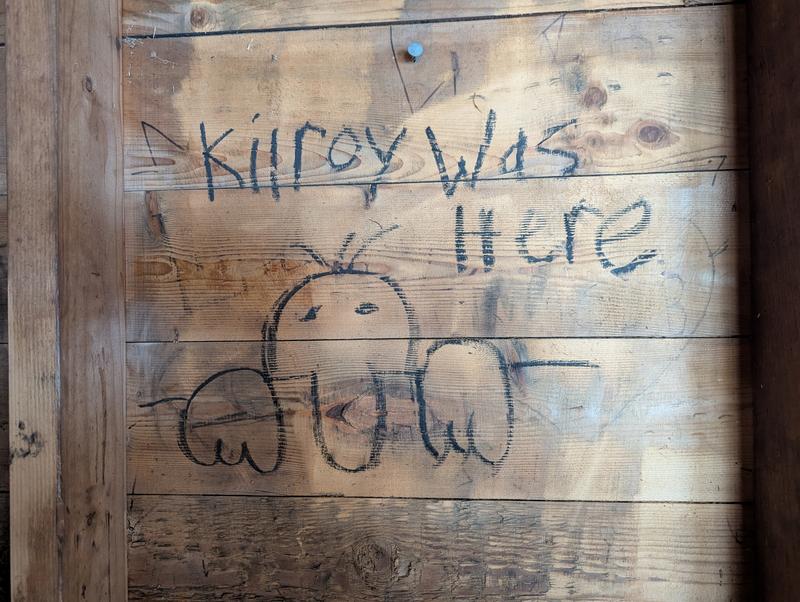Kilroy was Here
Few pieces of graffiti have traveled farther, or lasted longer, than the simple phrase “Kilroy was here”. Accompanied by the sketch of a bald-headed figure peering over a wall, its nose and fingers just visible, the image appeared across Europe, North Africa, and the Pacific during World War II. It was scrawled on ship hulls, bunker walls, and the ruins of captured towns.
The origins of Kilroy are debated. Some trace it to James J. Kilroy, an American shipyard inspector who marked equipment he had checked with the phrase. Others suggest it merged with preexisting British doodles known as Mr. Chad, whose cartoon face carried captions like “Wot, no sugar?” Whatever the source, by the war’s midpoint the drawing had spread among Allied forces, passed by word of mouth and habit more than by authorship.
For soldiers, writing Kilroy was here became an informal ritual, a small act of humor and continuity amid the chaos of movement and destruction. To arrive at a newly taken site and find the mark already there was to share in a moment of connection, proof that someone else had endured the same journey. After the war, Kilroy followed veterans home, appearing in postwar pop culture, on walls, school desks, and even the inside of the Apollo 12 lunar module.
Today, the image endures as one of the earliest global memes, an anonymous signature that transcended nationality and medium. Part graffiti, part folklore, Kilroy Was Here stands as a symbol of collective voice: a reminder that even in history’s largest conflicts, the impulse to mark one’s presence, to simply say I was here, persists unchanged.
